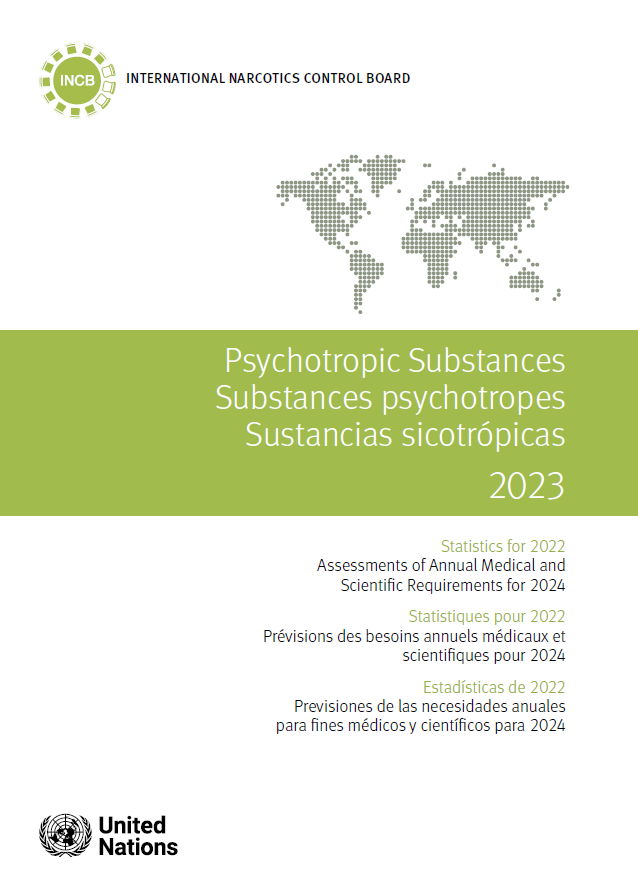INCB launches its technical report on psychotropic substances for 2023 with analysis focused on key manufacturing and consumption trends

VIENNA, 19 March 2024 - The International Narcotics Control Board (INCB) released today 'Psychotropic Substances 2023', its technical report presenting the consolidated global data on the licit manufacture, trade, and consumption of internationally controlled psychotropic substances for 2022.
The number of psychotropic substances under international control continues to grow with 167 substances included in the schedules of the 1971 Convention by the end of 2022. Eutylone, a synthetic cathinone with no recognized medical use, was placed in Schedule II of the 1971 Convention on Psychotropic Substances. Of the 167 psychotropic substances under international control in 2022, 10 substances accounted for approximately 80 per cent, or 840 tons, of total global manufacture by gross weight, with most manufacturing involving barbiturates and benzodiazepines included in Schedules III and IV of the 1971 Convention.
In 2022, of the 1,049.3 tons of internationally control psychotropic substances manufactured, approximately 863.8 tons were sedatives, 160.3 tons were stimulants and 25.2 tons comprised other drug types including analgesics. Phenobarbital accounted for more than a third of all manufacture in 2022 at 364 tons and was by far the most manufactured substance that year. Diazepam was the most widely traded substance with 158 countries reporting imports.
The report also shows that monitoring the availability of psychotropic substances for medical and scientific use continues to be a challenge. Continuing the trend of the last several years, while 99 countries and territories did provide consumption data for at least one psychotropic substance in 2022, the gaps between countries' consumption data remain significant and hinder the ability of the international community to ensure equitable access to internationally controlled psychotropic substances for medical and scientific purposes.
Nonetheless, among countries that did provide data, consumption levels of the most traded benzodiazepines, including alprazolam, bromazepam, chlordiazepoxide, clobazam, clonazepam, diazepam and midazolam, have continue to fluctuate. Global average consumption of alprazolam, diazepam and midazolam was lower in 2022 than in the previous year. Despite this, per capita consumption of alprazolam remained high with respect to other benzodiazepines, with several countries reporting significant increases in consumption. Consumption levels of other benzodiazepines remained largely the same as previous years.
With respect to the consumption of barbiturates, of those countries that provided data, levels of overall consumption of phenobarbital are lower in 2022 than in previous years but with significant disparities in consumption levels between and within several regions. While still manufactured in large quantities, consumption data on pentobarbital and barbital were only provided by a limited number of countries.
Consumption of dexamfetamine has remained at the same level for the past several years and was largely unchanged in 2022, with minor changes in consumption levels among the countries and territories that typically provide data. Similarly, overall consumption patterns in the consumption of methylphenidate have also remained at the same level for the past several years although a few countries have reported significant increases or decreases in consumption.
'Psychotropic Substances 2023' is now available for download.
***